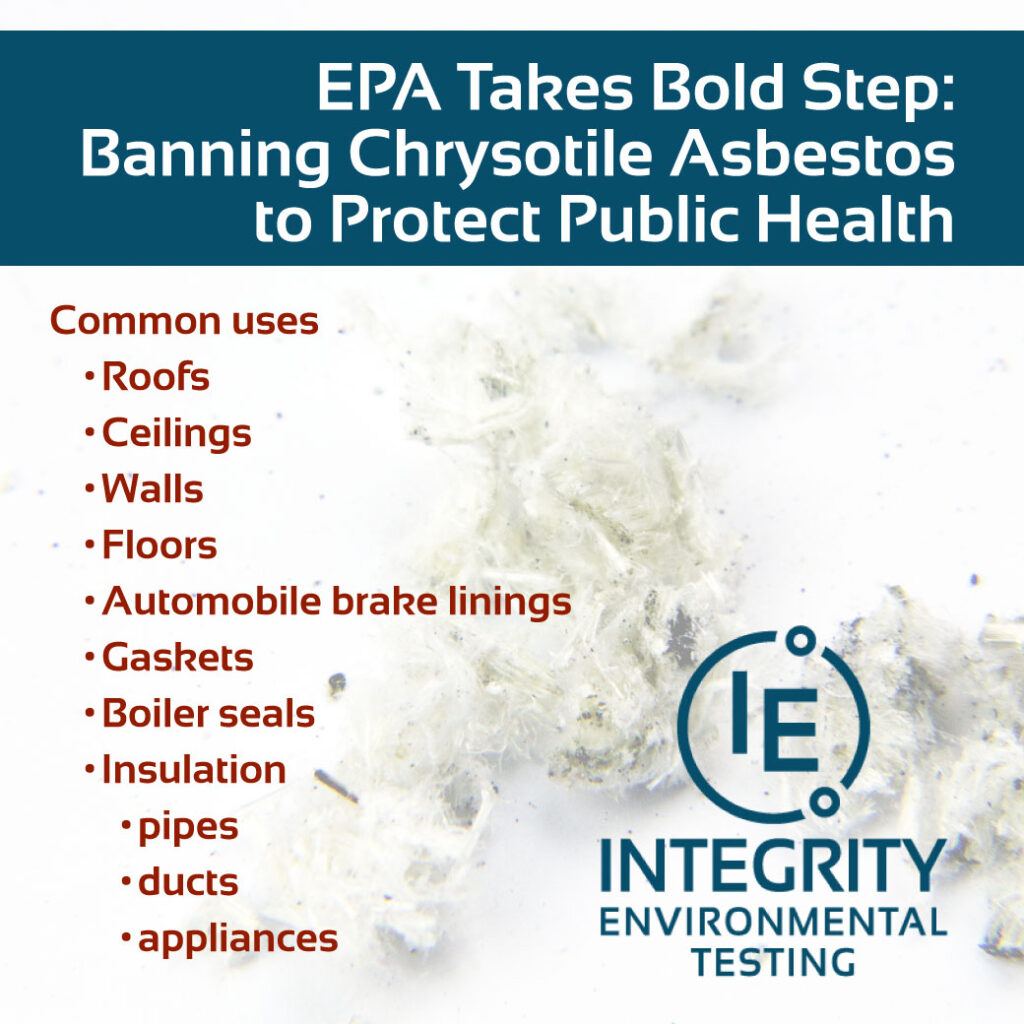In a groundbreaking move, the US Environmental Protection Agency (EPA) bans chrysotile asbestos in a decisive action to protect public health by banning chrysotile asbestos, the last remaining type of asbestos still used and imported in the country. This significant decision comes after years of advocacy and scientific evidence pointing to the severe health risks associated with asbestos exposure.
Wait! So, Asbestos use wasn’t already banned completely?
No, it was not banned for use in some manufacturing.
The EPA bans Chrysotile asbestos, commonly known as white asbestos, long used in various industries, including manufacturing, automotive, and construction. However, despite its widespread use, chrysotile asbestos has been linked to serious health conditions such as lung cancer, mesothelioma, ovarian cancer, and laryngeal cancer. The move from the EPA to ban chrysotile asbestos underscores the agency’s commitment to prioritizing public health and safety.
As a Reminder, if you plan on renovating or demolishing any structure, asbestos testing and remediation are required by the Colorado Department of Public Health and Environment.
See Regulation 8.
The new rule marks the EPA’s second attempt to ban asbestos in the US, following a failed effort in 1989. With the amended Toxic Substances Control Act (TSCA) in 2016, granting the EPA more authority to regulate hazardous chemicals, the agency now has the power to enforce stricter regulations on asbestos-containing products.
This is an interesting history of legislation and Asbestos bans by the EPA by the Mesothelioma Center. “OSHA defines asbestos-containing materials as any material that contains more than 1% asbestos. This means any material can be labeled asbestos-free if asbestos accounts for less than 1% of the product.”
Under the new law, chlor-alkali plants, which currently use chrysotile asbestos to manufacture high-volume chemicals like sodium hydroxide and chlorine, will be required to transition away from the substance within specified timeframes. Additionally, other users of chrysotile asbestos will also be mandated to phase out its use within a designated period.
While the EPA’s ban on chrysotile asbestos is a significant step forward in protecting public health, challenges remain. Some critics have raised concerns about the transition period allowed for certain asbestos users, which they argue could prolong exposure risks. However, the EPA has emphasized the importance of implementing workplace safety measures to protect workers during the transition.

As the EPA bans chrysotile asbestos, this reflects a critical milestone in the ongoing efforts to eliminate asbestos-related diseases and ensure safer working environments for all. By prioritizing public health and taking proactive measures to address hazardous substances, the EPA sets a precedent for environmental protection and safety standards nationwide.
As we move forward, it is imperative to remain vigilant in monitoring and enforcing regulations that safeguard public health and mitigate environmental risks. Together, we can work towards a future where hazardous substances like asbestos no longer pose a threat to our health and well-being.
For homeowners and businesses concerned about asbestos, Integrity Environmental offers asbestos testing services. Ensure the safety of your environment by scheduling an inspection with Integrity Environmental, or give us a shout for a free consultation.

Always Free Consultations

